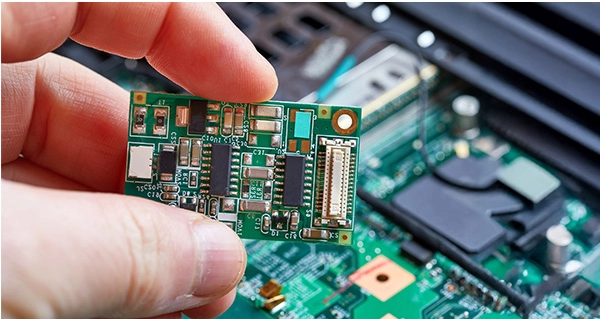SIR & ECM Testing
Ensure the reliability of your PCBs with objective cleanliness verification.
Printed circuit board assemblies (PCBAs) undergo numerous chemical, thermal, and mechanical processes during manufacturing—often more than 20 chemical steps alone. These processes can leave behind ionic residues from fluxes, solders, or other contaminants that increase the risk of electrochemical failures. Cleanliness testing provides critical data to verify material compatibility and long-term reliability.
Surface Insulation Resistance (SIR) Testing
SIR testing measures electrical resistance across circuit traces to detect ionic contamination. Low SIR values indicate a higher likelihood of corrosion or electrochemical migration (ECM)—the very failure mechanism SIR testing is designed to identify.
Key SIR test parameters include:
- Time
- Temperature
- Relative Humidity (RH)
- Bias Voltage
Testing is performed using an environmental chamber to precisely control temperature and humidity. Test coupons, typically in a comb-like trace pattern, are biased under DC voltage while resistance measurements are continuously collected for each net or channel.
Electrochemical Migration (ECM)
ECM refers to the conductive dendritic growth that forms between conductors under moisture and bias conditions. Through SIR and ECM testing, potential weaknesses in flux residues, solder mask, and overall process cleanliness can be identified before field failures occur.
Test Coupons & Standards
ORS Labs uses standardized IPC test coupons for comprehensive evaluation:
- IPC-B-52: Full assembly process qualification
- IPC-B-24/B-24B: Flux residue testing (liquid or paste)
- IPC-B-25/B-25A: Solder mask integrity and moisture sensitivity
Applicable standards:
- IPC-TM-650 2.6.3.7 – Surface Insulation Resistance
- IPC-TM-650 2.6.3.3 – Surface Insulation Resistance, Fluxes
- IPC-TM-650 2.6.14.1 – Electrochemical Migration Resistance
- J-STD-001J Appendix B – Objective Evidence of Material Compatibility
- J-STD-004D – Requirements for Soldering Fluxes
Environmental Conditions & Evaluation
Test conditions are tailored to simulate real-world stresses. Elevated temperature and humidity—typically 85–95% RH—accelerate chemical reactions and help assess ionic migration tendencies. After conditioning, coupons are visually inspected for dendrites, conductor spacing changes, discoloration, or other contamination indicators. All results are optically documented for review.
Contact us for information on SIR & ECM testing
Partner with ORS Labs for dependable SIR and ECM testing
Our automated AutoSIR systems deliver precise, repeatable measurements to validate process cleanliness and ensure long-term PCB reliability.
Contact us today to schedule your SIR or ECM testing.




